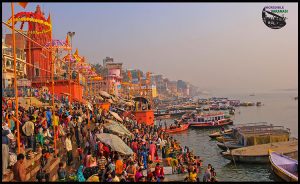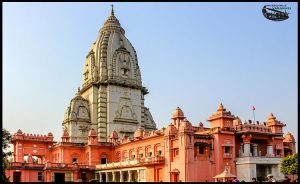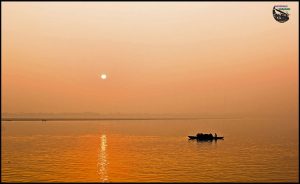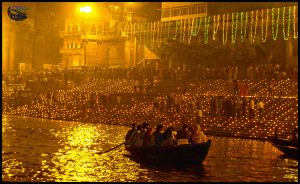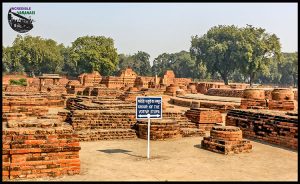1. Subah-e-Banaras: The rising sun appears on the horizon towards the opposite bank of the Ganga in Varanasi, and beautifully lights the ghats and adjacent buildings with the vibrant colours. The morning of Varanasi is very unique and special. Not because the rising sun appears very beautiful, but because with the rising sun, a new day of life starts on the ghats of Varanasi. Every morning thousands of the residents, the pilgrims as well the tourists walk down to the ghats to celebrate the Subah-e-Banaras. For many, this is the part of their daily life, but many more, arrive here first time to perform some rituals and ceremonies.There are many beautiful places in the world to witness a spectacular sunrise, but the sunrise in Banaras is unique because it provides a unique way to celebrate human life on the ghats of Ganga.
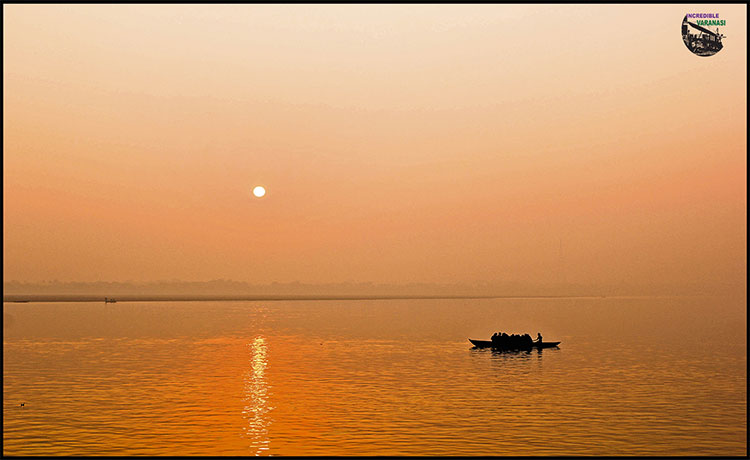
2. Watch out the Daily Rituals and Ceremonies along the Ghats: Take a 6-kms long walk from Assi Ghat to Rajghat, preferably in the morning. No streets, no boats and no temples, just walk along the river on the ghats. Watch the rituals and celebrations on the ghats. There are the locals who come to bath in the morning, the priests enchanting the shlokas and mantras, the pilgrims cleansing their sins in the Ganga river, washermen washing clothes on the stone slabs, the monks meditating on the river bank, tourists enjoying the riverfront, and then there are those who come to the holy city to live out their final days in Kashi, the dying souls. There are also the dead bodies burning on the funeral pyres at the burning ghats of Varanasi. A morning stroll through these ghats is a self-discovery and a way of harmony between the body and the soul, a unique and breathtaking experience.
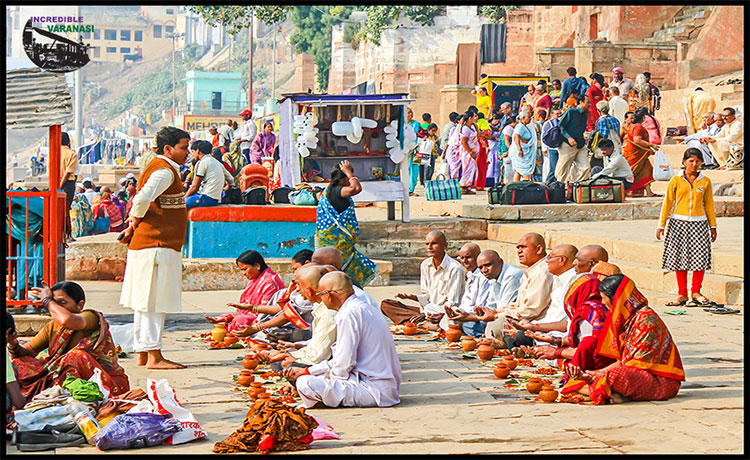
3. Witness a Funeral Procession at the Burning Ghats: Life and death exists together in Varanasi. Nowhere in the whole world, death is embraced as dearly as it is in Varanasi. It is just a everyday affair in Varanasi, where the holy river, the holy temples, the pilgrims, the burning ghats, the tourists, the infants, the young, the old, the holy cows..everything exists together side-by-side. While walking on the ghats, stop for few minutes at Harishchandra or Manikarnika Ghat and silently watch the funeral possession. Photography is not allowed on these ghats, unless clicked from a distance or from a boat. Think deeply about life, death, purification, salvation etc and attain the ultimate Nirvana of life.
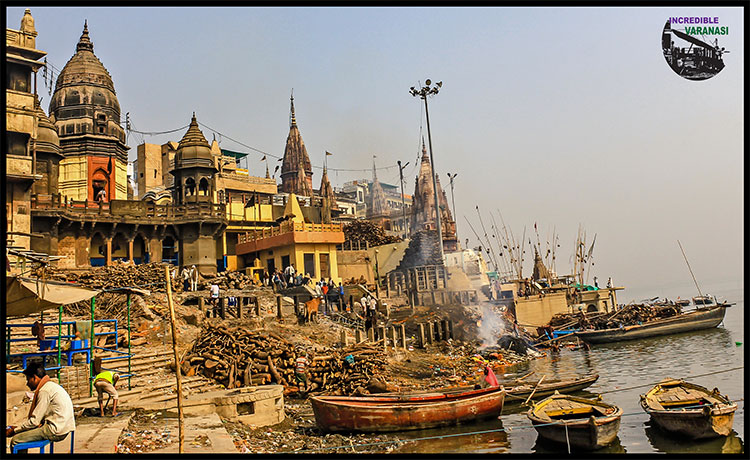
4. Boating in The Ganga: A trip to Varanasi cannot be completed without a boat ride in The Ganga. It is the most memorable experience in Varanasi. Get a boat from Dashashwamedh Ghat in the middle or start from the southernmost end, the Assi Ghat. The best time to take the boat ride is at the dawn as well as the dusk.
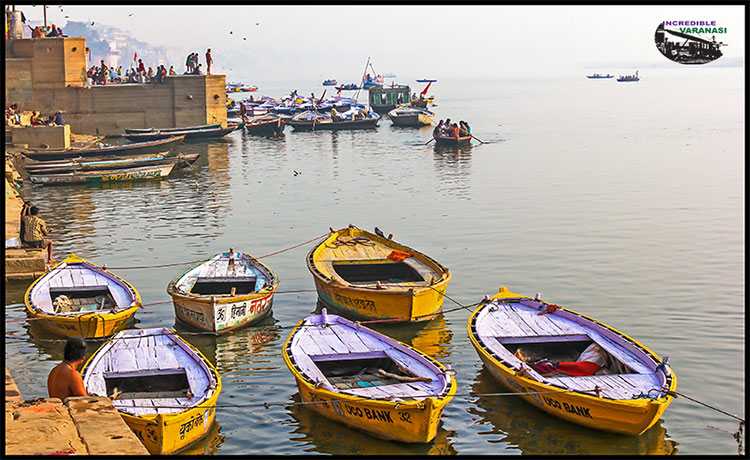
5. Enjoy Ganga Aarti in The Evening: The spectacular Ganga Aarti is a routine ceremony that takes place everyday in the evening at 0700 PM (0600 PM in winter) on the Dashashwamedh Ghat/Rajendra Prasad Ghat. The blowing of a conch shell marks the beginning, followed with the waving of incense sticks in elaborate patterns, and circling of large lamps that radiate light into the night sky. Hundreds of tourists, pilgrims and locals occupy every inch of the ghats, boats and even rooftops of nearby buildings to enjoy the Ganga Aarti. Arrive early to get a good spot to watch the ceremony.
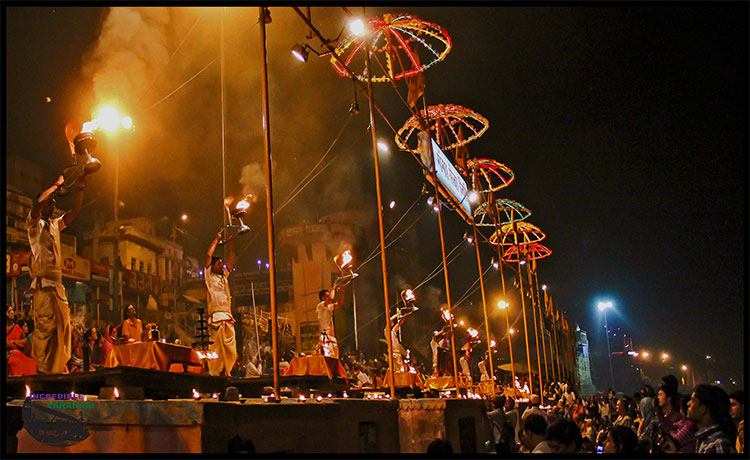
6. Enjoy Dev Deepawali: It is an annual celebration held across all the ghats in Varanasi on the 15th day after diwali festival (Normally in Late October/Early November) every year. The steps of all the ghats on the riverfront of the Ganga River, from Assi Ghat at the southern end to Rajghat, are lit with more than a million earthen lamps (diyas) in honour of Goddess Ganga. The sight of a million lamps lighting the ghats and river in vivid colours is a breathtaking experience of lifetime.
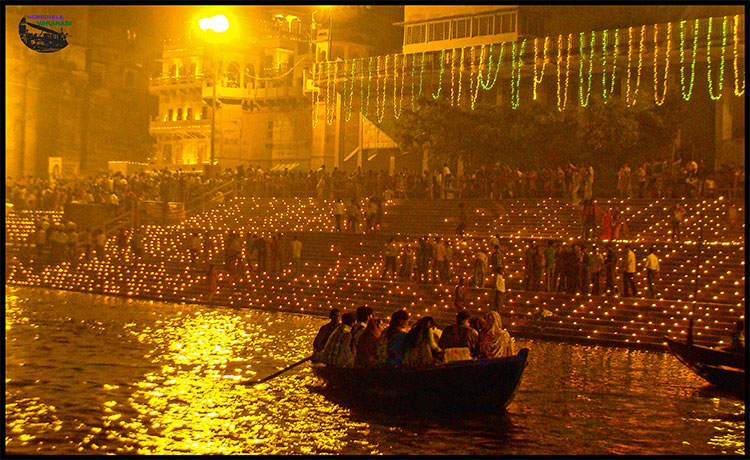
7. Explore the Roots of Buddhism in Sarnath: Lord Buddha delivered his first sermon here in Sarnath, after he attained the enlightenment at Bodhgaya. Later, Sarnath evolved as a great learning centre of Buddhism and the Buddhist Kings constructed many stupas, viharas and monasteries in Sarnath. It is also the excavation site of famous Ashoka Pillar, from which “The Lion Capital”, The National Emblem of India, is adopted.
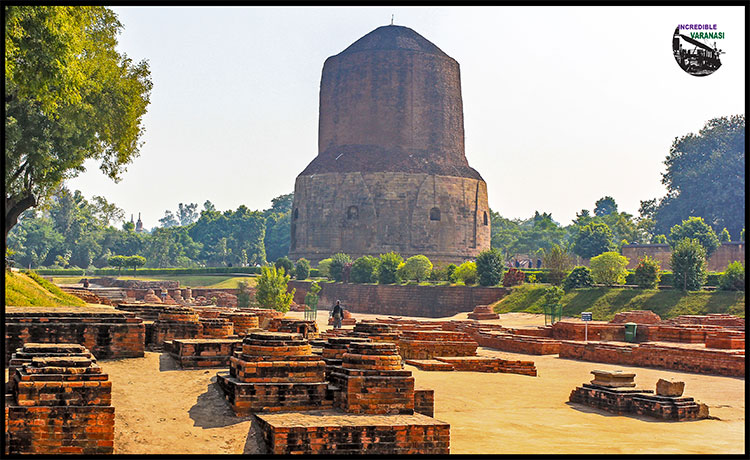
8. Visit at least a Fair/Festival: The grand fairs and festivals of Varanasi attract millions of visitors every year. Due to the presence of lakhs of people, some fairs are categorised as Lakhhi Mela (One lakh plus people enjoying the fair). The Nag Nathaiyya ( nailing the king cobra by Lord Krishna ) at the historic Tulsi Ghat, Bharat Milap (First meeting of Lord Rama with his brother Bharat after his exile) of Nati Imli, Nakkataiya (cutting the nose of Suparnkha) of Chetganj are the famous lakkhi melas in Varanasi. These fairs are generally held in the month of October during the festivals of Navratri and Diwali. The must visit festival list includes Holi, Diwali, Navratri, Durga Puja, Chhath Puja, Many sacred snan (bath in the holy river) days etc.
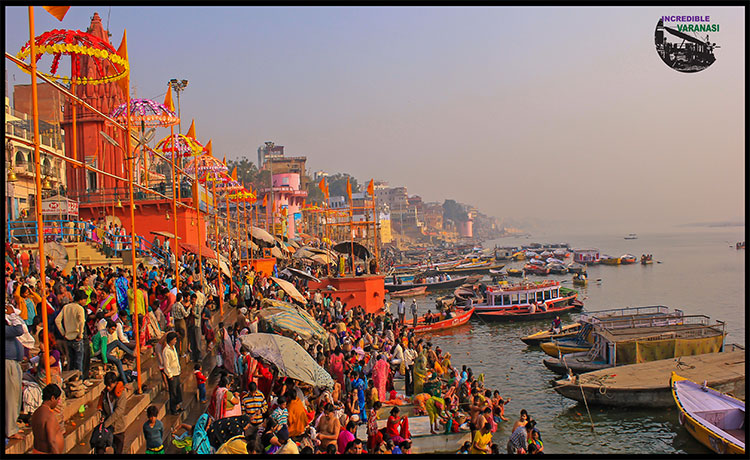
9. Eat Banarasi Paan: The betel leaf is famous as Banarasi Paan in Varanasi. This is a mouth fresher to remove the bad odour from the mouth and it all helps in digestion after heavy meals. Making a paan is an art and its ingredients and their actual proportion makes it delicious.Paan is also known as Tambul in Sanskrit. Enjoy hundreds various types of Paan depending on its ingredients at the hundreds of Paan/Tambul Bhandar (Small Shops) in Varanasi.
10. Enjoy the streets foods: Varanasi is a foodie’s delight. The narrow alleys and streets of Varanasi is filled with many shops selling various types of mouthwatering meals. Enjoy the famous kachori in Kachori Gali, Jalebi Rabri in Vishwanath Gali, Lassi and Lawang Lata at Pahalwan’s Shop or at Basant Bahar, Aaloo chat at Kashi Chat Bhandar. Forget about the filth, garbage, and dust in the streets. Enjoy Varanasi at its best.
11. Enjoy Mangoes in Summer: Mango is considered as the king of all fruits in India. There are many varieties across the country, but the famous Langda mango is the Varanasi’s magic. Its smaller, greener and far sweeter than the famous Alphonso. Mangoes are generally available during the summer, particularly from Mid May to Mid August.
12. Buy Banarasi Silk: Banarasi Silk is worldwide famous as Banarasi Saris. These saris are known for their gold and silver brocade (zari work), fine silk and opulent embroidery. Made of finely woven silk and are decorated with intricate design, they are relatively heavy and considered among the best in India. The making of these saris is a very rigorous process, and a trip to these handlooms is also a special experience.
There is nothing else like Varanasi, anywhere in the world. It should not be visited with a pre-occupied mind or with a lot of expectation. Its first encounter will never impress, for sure. It is a city of contrast, at each step, in every corner. Its holiest, also the dirtiest; Ganga is sacred, also a polluted mess; its full of kind people, also famous for its thugs (cons); its a place to live, also a place to die. Everything exists here together, side by side. The filth, chaos, poverty, rituals, culture, ceremonies of Varanasi simply must be experienced with an open mind.
And once a person experience its soul, he will either love it or hate it, there is no way to ignore it. No matter how many photos seen or words read, while coming on a trip to Varanasi, one should leave all his pre-occupied senses behind. Just spend some days in Varanasi to explore it. It will surely become an integral part of the life. Varanasi is more than a spiritual place, more than a tourist centre, its a pure experience of the heart.


